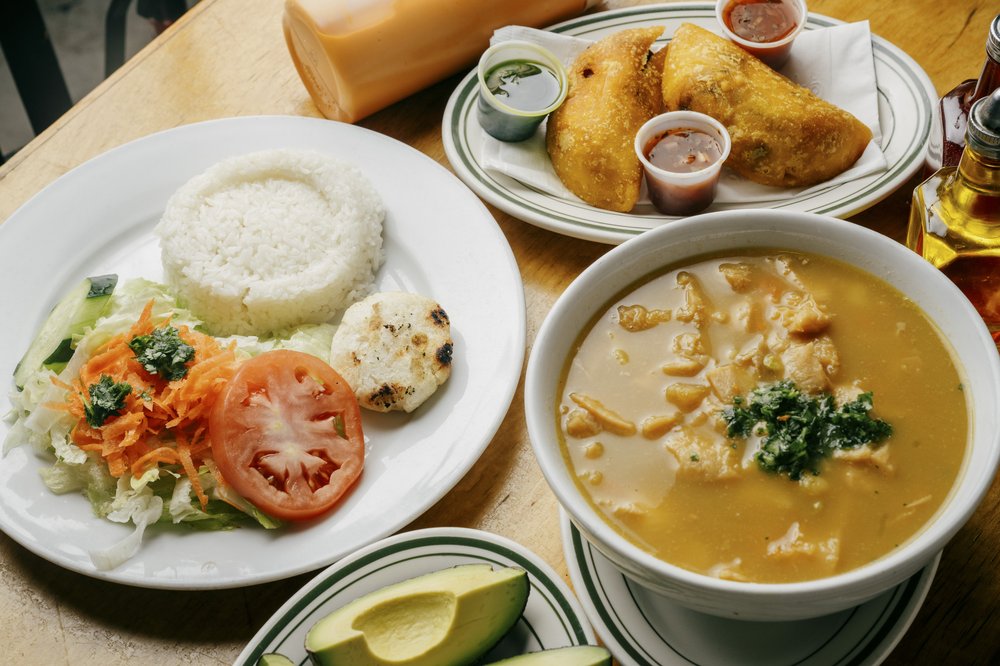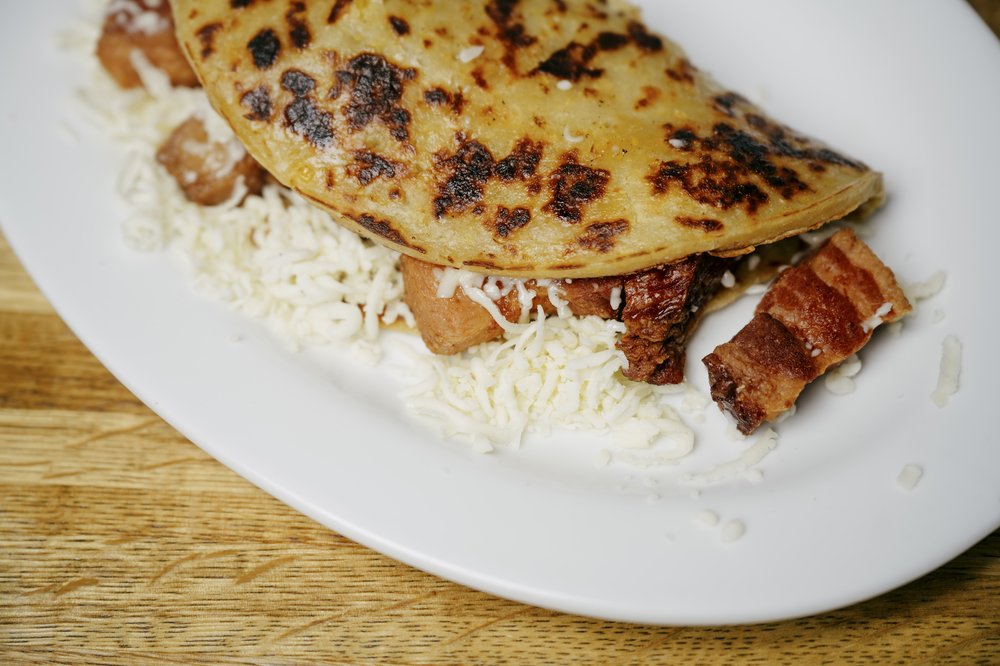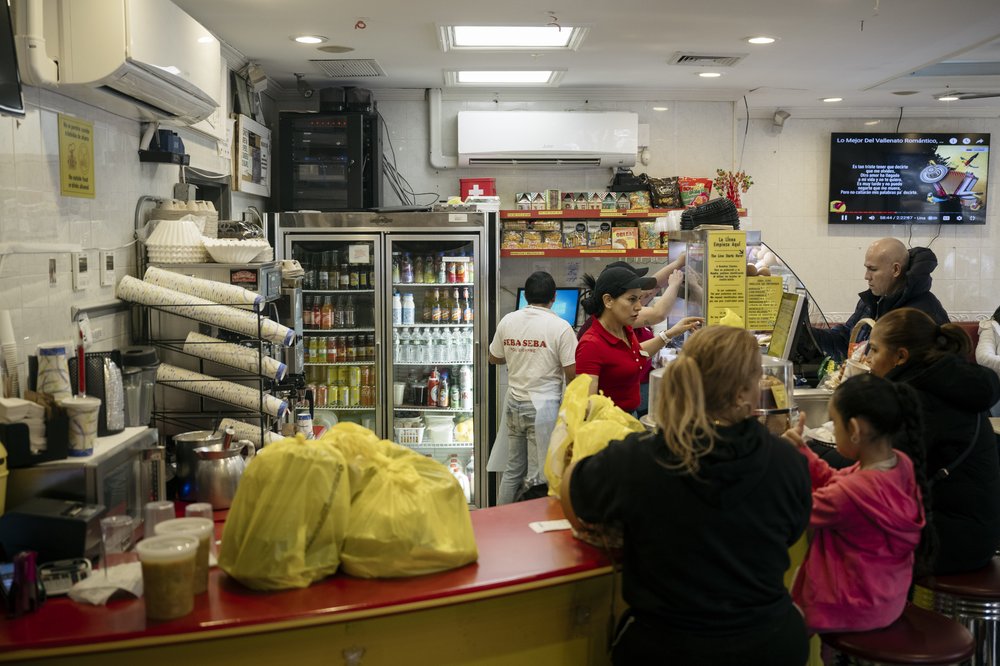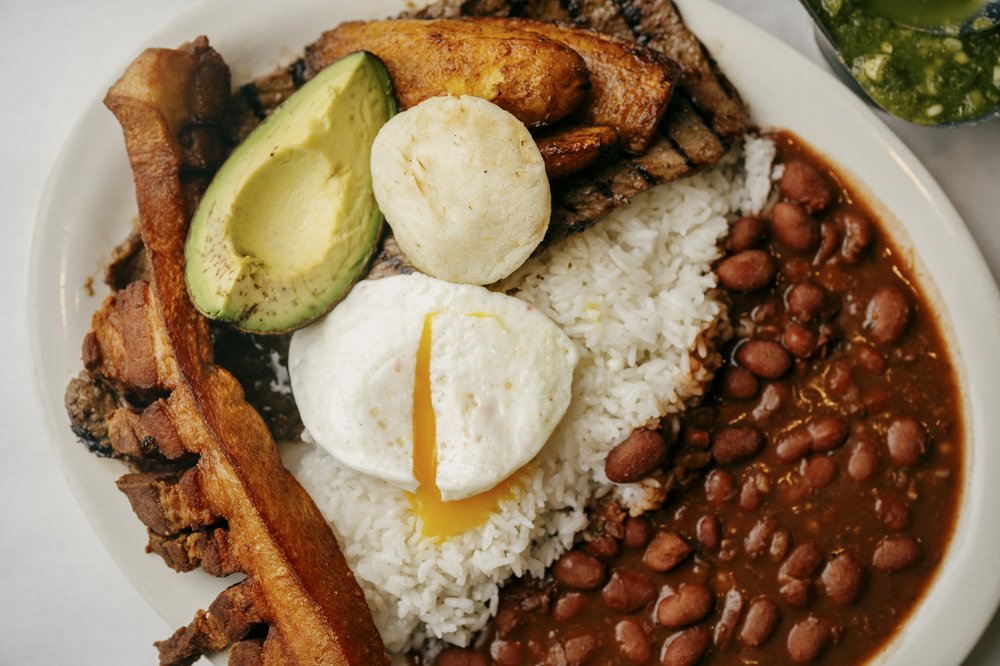Where to get great Colombian food in Jackson Heights, Queens
Jan. 25, 2024, 11:43 a.m.
No need to book a flight to Cartagena: Great arepas, ceviche and more can all be had in New York City’s Little Colombia.

Farideh Sadeghin is a chef and video host based in Brooklyn. In this series, she explores New York City neighborhoods through their food and histories.
I traveled to Cartagena, Colombia, for my birthday seven years ago. It was there that I discovered arepas, had some of the best ceviche of my life, and celebrated by dining on fresh grilled fish on the beach.
At the time, I had no idea that I could have saved myself a lot of time and money and eaten the same foods by just biking to Little Colombia in Jackson Heights, Queens.
Step off the 7 train and walk along Roosevelt Avenue from 79th to 84th streets, where you’ll hear Latin music blaring, smell foods frying and feel as though you’ve been transported directly to Colombia.
According to the nonprofit Migration Policy Institute, Queens is one of the top counties in the United States where Colombians live. The nonpartisan think tank says violence, economic instability and drugs drove many Colombians to leave for the United States, with momentum in the 1980s through the 2000s.
My friend Edwin Santacruz, a graphic designer and animator who's also the bassist for Brooklyn-based punk band Make War, moved to the United States from Cali, Colombia with his mom in 2001 to escape the violence of the cartels. They followed his dad and brother, who arrived several years earlier.
Santacruz now lives in Queens and is always on the lookout for good Colombian food, but hasn’t spent much time in Little Colombia specifically. We were both excited to explore and eat in the area.

Our first stop was the Arepa Lady, a sit-down restaurant on the corner of 37th Avenue and 78th Street. It was started by Maria Cano, a former lawyer and judge in Colombia, who said she moved to New York in the 1980s with three of her four sons to flee violence in the country.
According to her son Alejandro Osorio, who now runs the business, Cano was a single mom, and their hometown of Medellin just wasn’t safe. Starting over in the United States, looking for a job, and raising her three boys was tough, especially since she didn’t speak English. Cano said starting her own business was the only option to provide for her family.
Because she didn’t have a license for her food cart when she first started, she operated from 9 p.m. until 5 a.m. in order to avoid the watchful eyes of the police. Eventually, her sons decided to take over her business and run it as a restaurant in 2014. They now have three locations throughout the city: in Jackson Heights, Astoria and Downtown Brooklyn.
Osorio says the Colombian community was much larger when they first moved to the area. In recent years, he’s seen Colombians and other immigrants in this part of Queens moving to New Jersey and Long Island as a result of being priced out.
Santacruz and I walked into the restaurant, and he immediately looked to see if they had aguapanela, a traditional Colombian drink served hot or cold. The liquid is made by dissolving unrefined sugarcane, or panela, in hot water. We ordered it hot and it came with large pieces of mozzarella that Santacruz immediately added to the hot liquid. The cheese softens nicely in the hot bath and is melty as you drink the sweet juice.
As a kid, Santacruz said he and his family would drive through the Andes to Bogota from his home in Cali. The ride up the mountains was steep and often fairly terrifying, but once they reached the top of the line, or la linea, his family would pull over and they’d have aguapanela.
I wasn’t entirely sure what to expect. The concept of having a hot, sweet drink with melted cheese in it seemed odd — but trying it, I was pleasantly surprised. The cheese was salty and stringy as it melted, and it tasted great with the sugary, hot drink.
We also ordered a cheese arepa and a choclo arepa. Arepas are corn cakes that look similar to pancakes, though they’re typically around 4 inches across. You can also find arepas in Venezuela, where they're often stuffed with a variety of savory fillings. But in Colombia, they tend to be served a bit more simply, with butter melted on top or cheese grated right over.
The choclo arepa was a bit thinner and bigger than the typical arepa and came overflowing with chicharron and cheese. We enjoyed them with ajo (a garlic sauce), rosada sauce (a mixture of mayonnaise and ketchup), and pineapple sauce.

Our next stop was Seba Seba on 37th Avenue and 80th Street. There is table seating and a yellow bar with a red counter and stools. The counter was lined with yellow plastic bags full of people’s to-go orders.
We grabbed a table and ordered a couple of empanadas. The fried turnovers are made with yellow corn and stuffed with seasoned meat and potatoes, then fried and served with an ají sauce (a vinegary dipping sauce with cilantro, tomatoes, onions, and chiles).
There are tons of Colombian snacks by the register, as well as a hot case filled with pastries (like taqueños Colombianos, cheese sticks wrapped in dough), sausages, and buñuelos (perfectly round fritters). The empanadas were great, and Santacruz was on a mission to keep searching for the best one in the area. This would not be our last empanada of the day.
Walking east toward 81st Street along 37th Avenue, we came to La Boina Roja, a family-run steakhouse connected to a butcher. Run by brothers Gustavo and Jaime Salazar, most of the people who work at La Boina have been there since the eatery opened in 1997. We stopped in the shop and had a look around. Santacruz grabbed some panela; no doubt he will be enjoying an aguapanela at home many days this winter.
The restaurant next door was large but fairly quiet that afternoon. Our server, Maria Salazar, has worked there since September 1998. She recommended we order the Saturday special, mondongo (a tripe soup), and of course we got some more empanadas. We sliced up the wedges of avocado that came with the soup and added it to the top, then squeezed on some fresh lime juice. It was creamy, thick and warmed us up. I’m not always a fan of tripe, but this was so flavorful and full of vegetables. The avocado and fresh lime balanced it all out.

A block away, between 81st and 82nd streets along 37th Avenue, is La Casa de los Antojitos, a bakery with some seating and cases filled with cakes and desserts. Santacruz grabbed a coffee and I grabbed us a beef empanada and an almojábana. Made from cornmeal flour and cuajada (a white cheese) the almojábana is served warm, its fluffy texture springy and light. The empanadas here were baked and made from a flaky, sweet pastry dough. We took our snacks and headed back into the cold to our next destination, La Pequeña Colombia.
La Pequeña Colombia has been on the corner of 84th Street and Roosevelt Avenue since opening in 1984. The large restaurant was already starting to fill up as we took our seats at a table. The staff were incredibly friendly and kind, and Santacruz immediately noticed a large screen in the back of the restaurant, noting it would be the perfect spot to come to watch the next World Cup.
We shared the platter montanero, a traditional Colombian plate of steamed white rice, grilled steak, fried pork rind, red beans, avocado, egg and plantain: a variation of bandeja paisa, which many consider to be Colombia's national dish.
We grabbed some empanadas here, too, and Santacruz insisted I try the refajo, a drink made by mixing beer and soda. Santacruz ordered an Aguila beer and a Colombiana (a soda that tastes a bit like cream soda, with a nutty, sweet flavor), then poured them (to his specific and preferred ratio) into a tall glass. Similar to a shandy, it was light and refreshing, the perfect compliment to our platter of meats, rice and beans.
A few blocks away on the corner of 80th Street and Roosevelt Avenue is Cositas Ricas, a lively and bustling spot with neon lights lining the windows and interior walls; a huge cow statue sits atop the exterior wall greeting all who enter.
Open 24/7, Cositas Ricas was vibey. Santacruz and I immediately decided that we needed to come back another time and just sit and drink at the bar. We ordered the mojarra, a whole fried fish that came with steamed rice, coleslaw and tons of limes.
We threw back a couple shots of aguardiente, a schnapps-like drink with an anise flavor (and very easy to take down). As a kid, Santacruz didn't like the smell of fish, so to get him to eat it, his mom used to fry it for him. The fish at Cositas Ricas was crispy but light, as well as moist and flaky. It was the perfect foil to the snacks and meats we’d been eating thus far.

We then wandered to the corner of 79th and Roosevelt to Los Chuzos y Algo Mas. Here, we ordered a hot dog and salpicón (a fruit drink loaded with chunks of fresh fruit) at the window.
The hot dog came topped with yellow mustard, rosada, ketchup, pineapple sauce, and potato sticks. Pineapple sauce, according to Santacruz, is like ketchup for Colombians — they eat it with everything. The salpicón had slices of banana, watermelon and apples. It was refreshing, and the hot dog was snappy and great. More pineapple on hot dogs, please!
In search of a cholado for dessert, our final stop was at Prontito. Located on Forley Street between Roosevelt and Britton avenues, the counter-service spot has plenty of seats and good vibes all around. With everything on the menu from hamburgers (stacked and loaded with all of the things) and hot dogs to fries and empanadas, we got the cholado prontito. A traditional dessert beverage, a cholado is made of shaved or crushed ice, then topped with fruit, sweetened condensed milk and whipped cream.
This one came with papaya, melon, mango, pineapple, apples, bananas and coconut with a cherry on top. It was sweet and refreshing, and despite having indulged in so much food throughout the day, it was the perfect ending and way to finish. The cherry on top, if you will.
- heading
- Try it for yourself
- image
- image
- None
- caption
- body
All of the restaurants mentioned in this article are in this Google Map, which you can save to your phone.